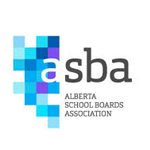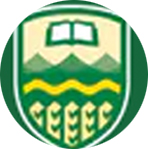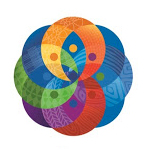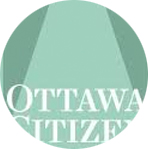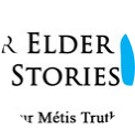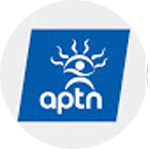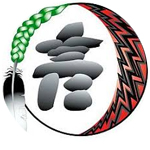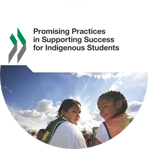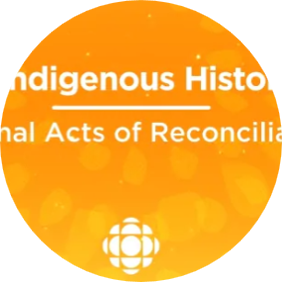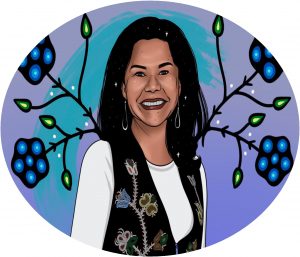Reconciliation
In this section, you will learn about reconciliation and the role of education in reconciliation.
Introduction
In this section on reconciliation, you learn about the importance of reconciliation and implementing strategies in your classroom, school, school district and Board room that include Indigenous learning and how this benefits all students and staff. The Final Report of the Truth and Reconciliation Commission of Canada states,
Reconciliation is about establishing and maintaining a mutually respectful relationship between Aboriginal and non-Aboriginal peoples in this country. In order for that to happen, there has to be awareness of the past, acknowledgement of the harm that has been inflicted, atonement for the causes, and action to change behavior. We are not there yet. The relationship between Aboriginal and non-Aboriginal peoples is not a mutually respectful one. But, we believe we can get there, and we believe we can maintain it. 1
Education about Canada’s historic and present relationship with Indigenous Peoples is central to reconciliation because we must understand the past in order to understand the present. Learning must be authentic and occur alongside Indigenous Peoples rather than apart from them. It is important to understand that reconciliation is on-going, will continue for generations to come, and takes time. It is about repairing harm and mending broken relationships. Reconciliation can happen at personal, professional, and larger social scale levels.
TRC Commissioner Murray Sinclair (Ojibway) stated that “education is the key to reconciliation,” adding, “education got us into this mess, and education will get us out of this mess.” 2
TRC Guiding Principles:
6. All Canadians, as Treaty peoples, share responsibility for establishing and maintaining mutually respectful relationships.3
Calls to Action
The Truth and Reconciliation Commission (TRC) released 94 Calls to Action in 2015 “to redress the legacy of residential schools and advance the process of Canadian reconciliation”.4
The Commission writes that “A critical part of this process involves repairing damaged trust by making apologies, providing individual and collective reparations, and following through with concrete actions that demonstrate real societal change. Establishing respectful relationships also requires the revitalization of Indigenous law and legal traditions. It is important that all Canadians understand how traditional First Nations, Inuit, and Métis approaches to resolving conflict, repairing harm, and restoring relationships can inform the reconciliation process.”5
The Commission gave us ten guiding principles that we can follow to move forward in reconciliation together.
-
- The United Nations Declaration on the Rights of Indigenous Peoples is the framework for reconciliation at all levels and across all sectors of Canadian society.
- First Nations, Inuit, and Métis Peoples, as the original peoples of this country and as self-determining peoples, have Treaty, constitutional, and human rights that must be recognized and respected.
- Reconciliation is a process of healing relationships that requires public truth sharing, apology, and commemoration that acknowledge and redress past harms.
- Reconciliation requires constructive action on addressing the ongoing legacies of colonialism that have had destructive impacts on Aboriginal Peoples’ education, cultures and languages, health, child welfare, administration of justice, and economic opportunities and prosperity.
- Reconciliation must create a more equitable and inclusive society by closing the gaps in social, health, and economic outcomes that exist between Aboriginal and non-Aboriginal Canadians.
- All Canadians, as Treaty peoples, share responsibility for establishing and maintaining mutually respectful relationships.
- The perspectives and understandings of Aboriginal Elders and Traditional Knowledge Keepers of the ethics, concepts, and practices of reconciliation are vital to long-term reconciliation.
- Supporting Aboriginal peoples’ cultural revitalization and integrating Indigenous knowledge systems, oral histories, laws, protocols, and connections to the land into the reconciliation process are essential.
- Reconciliation requires political will, joint leadership, trust building, accountability, and transparency, as well as a substantial investment of resources.
- Reconciliation requires sustained public education and dialogue, including youth engagement, about the history and legacy of residential schools, Treaties, and Aboriginal rights, as well as the historical and contemporary contributions of Aboriginal peoples to Canadian society.”6
Eleven of the 94 Calls to Action relate directly to education, although the majority correlate with education indirectly.
In 2014, Alberta Education made a commitment to integrate the Calls to Action into their mandate at the final Truth and Reconciliation Commission event in Edmonton. Alberta Education’s commitment to reconciliation included mandatory content for all Alberta students on residential schools and treaties, a Kindergarten to Grade 12 curriculum development standard, and support for professional learning opportunities for teachers.
Reconciliation is also about becoming aware of and acknowledging the short- and long-term impacts of policies and attitudes that have contributed to trauma, intergenerational trauma, and negative beliefs and attitudes about Indigenous Peoples. Working with, creating space for, and including narratives of Indigenous Peoples is essential to reconciliation. For example, it is one thing to understand Treaties from the written Crown perspective but acknowledging and learning about treaties from the spirit and intent as communicated by Indigenous People is imperative to reconciliation.
For All Students
Reconciliation in education is for all students. As Leroy Littlebear, Indigenous scholar, explains, Indigenous students most often feel excluded from seeing their culture, traditions, customs, languages, world views, and way of life reflected in curriculum. School is not a place for Indigenous Peoples empowerment and cultural affirmation.7 On the other hand, all students will benefit from seeing Indigenous People included in curricula. The Aboriginal Healing Foundations says that
In order to create and define clear models and best practices to continue strengthening and reinforcing Aboriginal capacity for social resolution and social action, it is necessary to understand the mechanisms put in place by colonizers to marginalize and downgrade Aboriginal People’s personal roles and lifeways. These mechanisms served to destroy Aboriginal culture and social domains, to restrict their social mobility, to disfavor them in access to resources and to create or accentuate inequities within and between Aboriginal communities.8
Implications
A legacy of trauma, colonial policies, negative attitudes, and beliefs contribute to the negative social implications that many Indigenous People have and continue to face. Health researchers B. Allan and J. Smylie explain the effects this has on society:
The rippling effects of the trauma and rupture caused by colonial policies have served to reinforce or seemingly legitimize racist stereotypes about Indigenous Peoples. The damage caused to Indigenous communities by colonization illustrated through stigma created by poor physical and mental health, high rates of substance abuse, suicide, poverty, unemployment, under-housing and homelessness, and overrepresentation in incarceration and child welfare, may be used as justification for continuing racist beliefs, paternalistic policies, and inequitable treatment. Racist stereotypes have found steady employment beyond policy documents, showing up in public education systems and media coverage, contributing to and reinforcing a naturalized kind of racism that permeates Canadian society.9
As educators, we can facilitate opportunities to dissolve negative stereotypes and promote positive thinking about and understandings of Indigenous Peoples. Weaving of Indigenous history, worldview, and culture in our processes and curriculum will enhance opportunities for reconciliation.
Balancing Education
The Government of Alberta’s Education for Reconciliation initiative says, “Education for Reconciliation is a step towards rebalancing the education system, advancing reconciliation and supporting the commitments made by the Government of Alberta in response to the Truth and Reconciliation Commission of Canada Calls to Action.”10
In 2016, representatives from Alberta Education, The Alberta Teachers’ Association, The Alberta Association of Deans of Education, The Alberta School Boards Association, The Alberta Regional Professional Development Consortia, and The College of Alberta School Superintendents signed the Joint Commitment to Action with The National Centre for Truth and Reconciliation to ensure that all Kindergarten to Grade 12 teachers receive professional development related to First Nations, Métis and Inuit history and culture. This commitment directly correlates with some of the TRC’s Calls to Action such as.
#62 We call upon the federal, provincial, and territorial governments, in consultation and collaboration with Survivors, Aboriginal peoples, and educators, to: i. Make age-appropriate curriculum on residential schools, Treaties, and Aboriginal peoples’ historical and contemporary contributions to Canada a mandatory education requirement for Kindergarten to Grade Twelve students. ii. Provide the necessary funding to post-secondary institutions to educate teachers on how to integrate Indigenous knowledge and teaching methods into classrooms. iii. Provide the necessary funding to Aboriginal schools to utilize Indigenous knowledge and teaching methods in classrooms. iv. Establish senior-level positions in government at the assistant deputy minister level or higher dedicated to Aboriginal content in education.
#63 We call upon the Council of Ministers of Education, Canada to maintain an annual commitment to Aboriginal education issues, including i. Developing and implementing Kindergarten to Grade Twelve curriculum and learning resources on Aboriginal peoples in Canadian history, and the history and legacy of residential schools. ii. Sharing information and best practices on teaching curriculum related to residential schools and Aboriginal history. iii. Building student capacity for intercultural understanding, empathy, and mutual respect. iv. Identifying teacher-training needs relating to the above. 11
In 2015, the Government of Alberta stated that it was committed to renewing its relationships with Indigenous Peoples based on trust and respectful engagement. As part of this renewal , the government began the process of implementing the principles of the United Nations Declaration on the Rights of Indigenous Peoples (UNDRIP) and the Truth and Reconciliation Commission (TRC) of Canada Calls to Action.
In 2015, Alberta Education initiated a collaborative project to research how to improve the learning outcomes for Indigenous students in Alberta. The Organization for Economic Cooperation and Development (OECD) was invited to shape and implement this research project. The collaborative study investigated evidence-based practices that contribute to improving educational experiences and outcomes for Indigenous students. They identified four key findings in their report “Promising Practices in Supporting Success for Indigenous Students”:
-
- A clear will among leaders in school districts to improve educational outcomes for Indigenous students at every level.
- Promising practices are evident.
- Practices that benefit Indigenous students also benefit non-Indigenous students.
- Deliberate, sustained effort to achieve change at the system level. 12
The OECD report recommended six system-level priorities for accelerating change:
-
- Monitor student well-being.
- Make deliberate efforts to increase participation rates, in particular for early learning and senior education.
- Increase student engagement.
- Establish high-quality early learning programs.
- Support teachers and leaders.
- Engage families by establishing respectful, trusting, and positive relationships. 13
Fundamental Shift
The Government also established three professional practice standards: the Teacher Quality Standard (revised), the Leadership Quality Standard (LQS) and the Superintendent Quality Leadership Standard (SLQS) that include a required competency on First Nations, Métis and Inuit foundational knowledge that were implemented in September 2019. One of the indicators in this competency requires superintendents to lead reconciliation in their community, principals lead reconciliation in the school community and teachers lead reconciliation in the classroom.
SLQS/LQS professional practice standards state
Whereas
“Principals, school jurisdiction and superintendents play a fundamental role in establishing and supporting the conditions under which the learning aspirations and potential of First Nations Métis and students are realized.”
“Reconciliation “is the process and goal of creating societal change through a fundamental shift in thinking and attitudes, increasing intercultural understanding to build a better society through learning about FNMI perspectives, experiences, including residential schools and treaties. 14
Both the Alberta SLQS and the LQS identify the role of leadership “in pursuing opportunities and engaging in practices to facilitate reconciliation within the school community.” These standards define reconciliation as “the process and goal of creating social change through a fundamental shift in thinking and attitudes, increasing intercultural understanding to build a better society through learning about First Nations, Métis and Inuit perspectives and experiences, including residential schools and treaties.”13 Many individuals, communities, and jurisdictions are engaged in their own journey of reconciliation. Building authentic, sustained relationships with local Indigenous Peoples and communities is central to this process. Please refer to the section on relationship building for further learning and reflection.
Learning must be authentic and occur alongside Indigenous Peoples. It is important to understand that reconciliation will take time, as it is about repairing harm, mending broken relationships, and creating and sustaining positive relationships.
The SLQS states:
Competency 1-Building Effective Relationships
-
- A superintendent establishes a welcoming, caring, respectful and safe learning environment by building positive and productive relationships with members of the school community and the local community. Achievement of this competency is demonstrated by indicators such as: ) building and sustaining relationships with First Nations, Métis and Inuit parents/guardians, Elders, local leaders, and community members;
Competency 2- Ensuring First Nations, Métis, and Inuit Education for All Students
-
- A superintendent establishes the structures and provides the resources necessary for the school community to acquire and apply foundational knowledge about First Nations, Métis, and Inuit for the benefit of all students. Achievement of this competency is demonstrated by indicators such as:
(a) supporting staff in accessing the professional learning and capacity-building needed to meet the learning needs of First Nations, Métis, Inuit, and all other students;
(b) engaging and collaborating with neighbouring First Nations and Métis leaders, organizations, and communities to optimize learning success and development of First Nations, Métis, Inuit, and all other students;
(c) understanding historical, social, economic, and political implications of: • treaties and agreements with First Nations; • legislation and agreements negotiated with Métis; and • residential schools and their legacy;
(d) aligning school authority resources and building organizational capacity to support First Nations, Métis, and Inuit student achievement; and
(e) pursuing opportunities and engaging in practices to facilitate reconciliation within the school community. 15
The LQS states:
Competency 1-Fostering Effective Relationships.
A leader builds positive working relationships with members of the school community and local community. Achievement of this competency is demonstrated by indicators such as: establishing relationships with First Nations, Métis and Inuit parents/guardians, Elders/knowledge keepers, local leaders, and community members;
Competency 5- Supporting the Application of Foundational Knowledge about First Nations, Métis and Inuit
A leader supports the school community in acquiring and applying foundational knowledge about First Nations, Métis, and Inuit for the benefit of all students. Achievement of this competency is demonstrated by indicators such as:
-
- understanding the historical, social, economic, and political implications of: • treaties and agreements with First Nations; • legislation and agreements negotiated with Métis; and • residential schools and their legacy;
- aligning resources and building the capacity of the school community to support First Nations, Métis, and Inuit student achievement;
- enabling all school staff and students to gain a knowledge and understanding of, and respect for, the histories, cultures, languages, contributions, perspectives, experiences and contemporary contexts of First Nations, Métis, and Inuit; and
- pursuing opportunities and engaging in practices to facilitate reconciliation within the school community. 16
Current Contexts
The Truth and Reconciliation Commissions Calls to Action were presented in June of 2015 while the three Alberta Professional Practices Standards, SLQS, LQS and TQS came into effect in September of 2019. Many districts are deep into the commitment to advancing reconciliation while others may be continuing to create or search for entry points to begin to make long term commitments.
Here are 2 examples of leadership by school districts to restore the balance in education for all students in a transparent and accountable manner.
A recent report from the Winnipeg Indigenous Executive Circle “State of Equity in Education Report” 2021 provides evidence-based strategies for the development and implementation of equity-based education policies and programs for Indigenous students that are enrolled in the public schools in Winnipeg. The annual report shares with the public what progress on the initial report’s calls to action has been achieved by school districts and universities. Several of the calls to action are similar to the OECD report “Promising Practices in Supporting Success for Indigenous Students”, monitor student well being and deliberate sustained effort to achieve change at the system level etc. Additionally, this recent report identifies the need to increase the proportional representation of Indigenous staff, in all roles within school districts and universities to improve success for Indigenous students and to address the diversity gap. 17 Promising Practices in Supporting Success for Indigenous Students
Another report 2018-2019 from the Toronto District School Board details the attention that the board undertook over the 3 previous years on the challenge of streaming students in a number of key areas including special education, academic programming and disciplinary process such as suspensions and expulsions. This type of streaming contributes to inequitable outcomes for students, in particular disadvantageous groups of students from racialized, (Indigenous) and lower socioeconomic backgrounds .18
The monitoring of this data and interventions taken to improve the challenges of streaming are similar to the actions taken in Winnipeg. Toronto District School Board states ‘‘the foundation of this work is through a commitment to professional learning and supporting staff to examine bias, power and privilege as they relate to the student discipline process and encourage the application of human rights, anti-racism and anti-oppression principles.” 19
In both studies the focus was to monitor the data to measure the impact of the strategies to inform evidence-based decision making and demonstrate accountability to their communities.
Revealing Truth to Motivate Action
In May 2021, national news spread across Canada of 215 uncovered unmarked graves of children at a former Kamloops Residential school sent shock, disbelief, and denial across the Canadian public landscape. This information was not new to survivors, their families and allies. There are continued calls for justice, accountability, truth and continued uncovering of the dead and murdered children who never made it home. Continued ground penetrating radar is happening across Canada, revealing human remains of children. Thousands of unmarked graves have been uncovered with more to come yet it is difficult to know exactly how many children died in total at the schools. Some schools across the country paid respects to the children who never made it home and continue the efforts to pay respect. The federal government, as one response, created the federal holiday “National Truth and Reconciliation Day” Murray Sinclair says, “Truth is hard. Reconciliation is harder.” on the importance of the first National Truth and Reconciliation Day, September 30, 2021 (TRC Call to Action #80) to commemorate the importance of learning the truth of Indian Residential Schools and their enduring legacy.
Indigenous Commemorative and Awareness Dates
One day events can be impactful in a school setting, yet it is necessary to weave and build Indigenous content, perspective and knowledge into everyday practice. This type of ongoing professional leadership practice shows a commitment to reconciliation therefore aligning with the SLQS and LQS Emphasis on continual learning and best practice throughout the school year can be done through strategic planning, policy change, resource allocation and long-range planning. With the new federal holiday, it is important that learning about Residential schools and their legacy happens prior to and throughout the school year. If students are not in school on that date, an awareness is built as to why they are not at school rather than just celebrating it as another day off school.
There are many significant dates that can be woven within the school year with learning also occurring daily. Indigenous calendars that translate the meaning of months into the original language and meanings or stories can also be emphasized within school year planning as starting points for engagement. For example, within nêhiyawak (Cree), the month of October translates to and means “the migrating moon”.20
Specific commemorative and awareness dates can help create entry points for further learning for leaders and learners.
Some significant Indigenous commemorative and awareness dates include:
- Reconciliation Ambearristers – Year-Round
- Treaty Days- various dates around the province in alignment with local First Nations
- International Day of the World’s Indigenous People – August 9th
- School is a Time for Dreams– September-October
- Fall Solstice – September 21
- International Day of Peace – September 21
- National Day for Truth and Reconciliation – September 30
- Orange Shirt Day (National) – September 30
- Secret Path Week – October 17-22
- Inuit Day (International) – November 7
- Indigenous Veterans Day (National) – November 8
- Rock Your Mocs Week– 2nd week of November
- Métis Week – 2nd week in November
- Louis Riel Day – November 16th
- Winter Solstice – December 21
- National Ribbon Skirt Day – January 4th
- Imagine a Canada – February Deadline
- Have a Heart Day– February
- International Mother Language Day – February 21
- Spring Solstice – March 20
- Elderbeary Day, – March 20th,
- International Day for the Elimination of Racial Discrimination, – March 21
- Week of Solidarity with the Peoples Struggling against Racism and Racial Discrimination – March 21 – 28
- We Matter- Mental Health Week May 2-8, 2022
- National Day of Awareness for Missing and Murdered Indigenous Women, Girls, and 2SLGBTQQIA+ Peoples (MMIWG2SLGBTQQIA+) – May 5
- Bear Witness Day- May 10
- Moose Hide Campaign Day – May 12
- Honouring Memories, Planting Dreams – May-June
- Summer Solstice June 20-21
- National Indigenous Peoples Day– June 21
- National Indigenous History Month – June
Moving Forward
Continued foundational knowledge learning aligned with strategies that dismantle systemic and everyday racism towards Indigenous people is necessary for reconciliation and student achievement in education. When Indigenous foundational knowledge, culture, and history is excluded from curriculum racism continues. 21 Interpersonal, organizational, and systemic racism holds anti-Indigenous racism in place. 22
Building a Framework and Plan to Address Equity, Inclusion, Diversity and Anti-Racism states:
Anti-Indigenous racism is the ongoing race-based discrimination, negative stereotyping, and injustice experienced by Indigenous Peoples within Canada. It includes ideas and practices that establish, maintain, and perpetuate power imbalances, systemic barriers, and inequitable outcomes that stem from the legacy of colonial policies and practices in Canada.
Systemic anti-Indigenous racism is evident in discriminatory federal policies such as the Indian Act and the residential school system. It is also manifest in the overrepresentation of Indigenous peoples in provincial criminal justice and child welfare systems, as well as inequitable outcomes in education, well-being, and health. Individual lived experiences of anti-Indigenous racism can be seen in the rise in acts of hostility and violence directed at Indigenous people.23
Rocky View schools in Alberta, did a study in 2020 which revealed that many Indigenous students do not attend school, therefore have barriers to academic success and achievement standards because of the racism they face from the content of curriculum, educators, and other students. The study revealed that educators connect lack of attendance to the legacy of Residential Schools which sets the problem in the past when in fact students are facing racism and feelings of not belonging in the present. Racism and a lack of cultural understanding contributes to poor attendance of Indigenous students in Alberta schools which in turn affects achievement. 24
Creating Racism-Free Schools through Critical/Courageous Conversations on Race:
Students who experience racism might
-
- be afraid of going to school
- have trouble studying and concentrating in class
- stay away from school
- feel anxious and unhappy
- have trouble making friends
- fall behind in schoolwork
- get lower results in their exams
- not speak their first language for fear of being teased or picked on
- reject their own culture and parental values
- be confused about their own identity
- be aggressive or disruptive
Teachers who witness or experience racism might
-
- not want to go to work each day
- lose confidence in their ability to teach
- feel anxious and unhappy
- stay away from school
- lose enjoyment in teaching
The effects of racism on the whole school include
-
- students making friends only with others from the same background
- conflict and fights between students from different cultural or linguistic groups
- conflict between staff and students from different backgrounds
- unfriendly school environment
- parents not having confidence in the school and education system 25
Conversations about racism within the education system at all levels are important. School division leaders can engage in critical and courageous conversations and initiatives to address systemic related inequities to help improve community, leadership and learning.26
In May of 2022, CASS in collaboration with the ATA released a Report on Indigenous Teachers and Leaders in Alberta’s Public School System. The report, in its 6 findings, identified that Indigenous teachers and leaders experience many obstacles, including racism and discrimination. Please read the report for further information on the findings.
Emphasizing Health and Wellness
Learning, relearning , unlearning and uncovering the truths of the shaping of Canada by including Indigenous contexts is a necessary part of the reconciliation process. Deepening knowledge in relation to original ways of knowing, being and doing can create entry points into connecting with community and learners. Emphasizing health and wellbeing of Indigenous students contribute to education success outcomes. Putting anti-racist education methods into policy and practice to create safe learning environments will benefit all students. Making space and long-term commitments that include Indigenous people in the processes of leading and guiding the process of reconciliation is essential. Becoming aware, acknowledging impacts, and implementing action to support truth telling and reconciliation at leadership levels aligns with the calls to action and quality standards. Essential to reconciliation is finding out and implementing systems to support the success of Indigenous and non-Indigenous learners and educators.
Contributions
Indigenous Peoples continue to survive, thrive, and contribute to Canadian society despite the impacts of colonization on the people and the lands in which they come from. Throughout the past, present and into the future it is important to recognize contributions of Indigenous Peoples. When colonizers first came to this land they relied heavily on Indigenous Peoples knowledge of surviving in this environment. Travel routes, resources, hunting, harvesting, and medicinal plants knowledge was shared to help the newcomers survive and thrive although exploitation of the shared knowledge and resources was imminent. Indigenous Peoples also fought alongside both the British and French and when battles were won Indigenous Peoples were no longer considered allies. Relationships of peace were promised yet much of these promises were broken. Despite broken trust many Indigenous Peoples continue to serve the country in many facets of society. There are Indigenous War Veterans throughout history despite having their culture and land colonized. The contributions of Indigenous War veterans is something to be acknowledged and commemorated.
The Haudenosaunee Confederacy (Iroquois Confederacy’s) Great Law of Peace influenced democratic governing structures that continue to exist today. Within the past and present there are many examples of Indigenous contributions. Throughout Alberta there are many examples of Indigenous leaders and everyday changemakers that have and continue to thrive and contribute to the shaping of Canada. Some examples of remarkable Indigenous Albertans include Chief Wilton Littlechild, Alex Janvier, Harold Cardinal, Nellie Carlson, Kathleen Steinhauer, Jane Ash-Poitras, Joane Cardinal-Shubert, Dr. Leroy Little Bear, Muriel Stanley-Venne, and the Métis Famous Five. It is important to seek current and historical examples of Indigenous Peoples within your local community as well as provincially, nationally, and internationally. Seeking connections with and examples of Indigenous led businesses, artists, politicians, athletes, organizations, and educators that uplift and celebrate Indigenous Peoples is a key component to reconciliation. Within the resource list there are examples to start with, yet the list can be expanded based on local community connections and keeping current.
Reflection
1. How is your jurisdiction working to build authentic, sustained relationships with local Indigenous Peoples and communities to engage in the process of reconciliation?
2. What is your role as a superintendent in facilitating reconciliation?
3. “A clear will among leaders in school districts to improve educational outcomes for Indigenous students at every level.” was identified in the OECD study as one of four practices to improve success for Indigenous students. What does a clear will look like in action in your school and or school district?
4. Which of the 6 district wide strategies for improving Indigenous student success is actioned in your district?
5. How do you establish the structures and provide the resources necessary for the school community to acquire and apply foundational knowledge about First Nations, Métis, and Inuit for the benefit of all students?
6. What are your district’s policies and practices that advance reconciliation which is inclusive of anti-racist Indigenous education?
7. The TRC guiding principle 6. All Canadians, as Treaty peoples, share responsibility for establishing and maintaining mutually respectful relationships. Why is it necessary for school and district leaders to understand their role as treaty people?
8. The Alberta SLQS/LQS professional practice standards state: Whereas “Principals, school jurisdiction and superintendents play a fundamental role in establishing and supporting the conditions under which the learning aspirations and potential of First Nations Métis and Inuit students are realized.” How are you leading, what actions have you implemented, to create the conditions for this to occur?
9. How are you making space for Indigenous educators and foundational knowledge?
Related Resources
Chair of the Truth and Reconcilation Comission of Canada (TRC), Justice Minister Murray Sinclair, describes the importance of Education and Reconciliation.
This is the Truth and Reconciliation Commission’s 94 Calls to Action.
A website feature education, research archives, reports and records relating to reconcilation. The site was created to honour “a shared vision held by those affected by Indian residential schools was to create a place of learning and dialogue where the truths of their experiences were honoured and kept safe for future generations.”
This interactive website allows users to explore the progress that Canada has made in each of the 94 Calls to Action.
ASBA Indigenous Advisory Circle Members provide some insights into how we can recognize when reconciliation has occurred.
ASBA Indigenous Advisory Circle members explore what reconciliation is and how it can be actualized in the classroom.
ASBA Indigenous Advisory Circle Elders discuss various challenges in education and the importance of letting young people know where the idea of reconciliation comes from.
ASBA Indigenous Advisory Circle Elders discuss how to support Indigenous students in our schools.
ASBA Indigenous Advisory Circle members talk about the importance of providing young people with a sense of self and pride through teaching the Indigenous history of Canada.
Indigenous Canada is a 12-lesson Massive Open Online Course (MOOC) that explores Indigenous histories and contemporary issues in Canada.
The animation has been created as a new education resource that explains where Intergenerational Trauma comes from and how it impacts young Aboriginal and Torres Strait Islanders (Australian resource that is also relevant to Indigenous Peoples in Canada).
This article examines the complexities of reconciliation from Indigenous perspectives.
A beautiful educational short film about Métis resilience and stories to encourage revitalization of the endangered Michif language through development of a new Michif-language song. Andrea Menard’s song, based on Tom McCallum’s Elder stories, support communities and educators’ actions toward reconciliation while they reaffirm connections to the Métis homeland in Edmonton
This video examines Intergenerational trauma and its impact on Indigenous Peoples in Canada.
This article examines the complexities of reconciliation from Indigenous perspectives.
This article examines the complexities of reconciliation from Indigenous perspectives.
The document uncovers roots of trauma as well as provides recommendations to foster healing.
This website provides an opportunity for individuals to connect to reconciliation in their personal journey by selecting spirit, head, heart or body, each of which will lead to unique resources.
The National Film Board has a wide array of video’s as well as educator materials that support Indingenous topics and reconciliation.
Rather than focusing on “gaps” and “deficits” this report suggests a more holistic approach to measuring learning which includes redefining what is meant by “learning success”, and to develop an appropriate framework for measuring it.
The document recommends initiatives to build hope healing and reconciliation.
This RockyTalk features Rancheview student, Harmony, sharing her presentation regarding the need for reconciliation at the Innovators CAN Gala.
A few years ago the Calgary Foundation developed this toolkit to help non-Indigenous peoples interested in learning how to become an ally. With the recent tragic findings of Indigenous children’s remains at the Kamloops Indian Residential School and growing awareness of the traumatic impact of other colonial policies on Indigenous Peoples, many Canadians are wondering how to learn about becoming an ally.
Dr. Patti Laboucane Benson & Allen Benson from Native Counselling Services of Alberta discuss historical trauma.
Presentations and Film Screening with Dawn Marie Marchand, Young Medicine and Coty Savard.
Elder Wilson Bearhead speaks about his personal connection to reconciliation.
The report seeks to identify promising strategies, policies, programmes and practices that support improved learning outcomes for Indigenous students and to build an empirical evidence base on Indigenous students in education. The study investigates four areas in Indigenous education: well-being, participation, engagement and achievement in education.
Cheryl Ward, Cindy Blackstock and Cowboy Smithx talk about reconciliation four years on from the Truth and Reconciliation Commission’s final report.
No matter who you are or where you’re from, you can take part in peaceful and respectful actions to help make a better Canada for First Nations children and their families. Here are a few ways you can participate.
”.The report , in its 6 findings , identified that Indigenous teachers and leaders experience many obstacles , including racism and discrimination. Please read the report for further information on the findings.
Prize-winning journalist Tanya Talaga explores the legacy of cultural genocide against Indigenous Peoples.
A universal framework of minimum standards for the survival, dignity and well-being of the Indigenous Peoples of the world and it elaborates on existing human rights standards and fundamental freedoms as they apply to the specific situation of Indigenous Peoples.
This resource identifies ten acts of personal reconciliation that can be considered and shared with others.
In a recent interview with the Globe and Mail, Dr. Ottmann discusses her understanding of the meaning of leadership, based on the Indigenous 7-generation philosophy and how we can bring it to life in our own leadership by answering the following questions both individually and collectively (organization) in our roles. Who are we? Where do we come from as an organization? Where are we going? What are our responsibilities? Dr. Ottmann also speaks to the difference between indigenization and decolonization.
Resilience: 50 Indigenous Art Cards and Teaching Guide is a boxed set that contains 50 full-colour, 8″ x 10″ reproductions of contemporary Indigenous art and a bilingual (English/French) teaching guide, full of ideas on how to use the art cards to animate discussions and inspire activities in all subjects, from kindergarten to grade 12. It is based on the exhibition curated by Lee-Ann Martin, with teaching guide developed by Yvette Cenerini, Lita Fontaine, Dawn Knight and Albert McLeod.
Edmonton Public System leaders were interested to learn how to increase the engagement of Indigenous parents/caregivers in their child’s education and how success for Indigenous students should be defined. The inclusion of voices of parents, Elders and students was central to the research findings of what is meant by Indigenous parental engagement and students success, what it looks like, and how it can be realized in school systems.
On this page, you will find resources that have been developed by Métis to not only help you learn about our Nation, but also how to begin applying your learning in your schools.
Teaching & Learning – Rupertsland Institute
Teaching & Learning – Rupertsland Institute
Rupertsland Centre for Teaching and Learning develops comprehensive foundational knowledge resources, engaging lesson plans, meaningful professional development opportunities and authentic classroom learning tools that speak accurately and meaningfully to topics in Métis education.
This article describes a learning pathway for all educators to begin and or deepen their learning about Indian Residential School so that we can pursue reconciliation to decolonize and Indigenize our education system. The article also shares many excellent references for further study. Angela Houle is a consultant for Indigenous Education with Calgary Catholic School District.
David A. Roberston has compiled a list of 48 books, (fiction, non-fiction, poetry ) for all ages to learn more about the experiences of Indigenous children forced to attend Indian Residential Schools. Each recommended book comes with a brief overview of the book and its suitability for different audiences.
Collection of Resources and Lesson Plans, Videos: Hosted by First Nations University of Canada, which has a 40-year history of being Indigenous-owned, operated, and controlled. The Centre is grounded in principles of respect, reciprocity, and relationship, which are understood in Indigenous ways and honoured according to Indigenous protocols and customs. *** Very rich website with lesson library, articles, videos, movie productions and more.
The Canadian Race Relations Foundation is Canada’s leading agency dedicated to the elimination of racism and all forms of racial discrimination in Canadian society. This document helps to inform and encourage educators, describes the levels and effects of racism…
This introductory workshop will encourage educators to critically reflect on concepts such as systemic racism and assimilation. Historical and contemporary examples of anti-Indigenous racism will be explored, and participants will be challenged to consider their own role in dismantling anti-Indigenous racism.
An online interactive educational experience feature Indigenous Sports Heroes. Educational activities align with Indigenous ways of knowing, being and doing.
From mentoring programs to youth conferences and educator support, Indspire provides vital resources to help students graduate and go on to fulfil their potential.
The Indspire Awards represents the highest honour the Indigenous community bestows upon its own people. Celebrating Indigenous Peoples.
The Institute for the Advancement of Aboriginal Women (IAAW) is a non-profit organization that recognizes the role, value, and achievement of Aboriginal women in society and raises awareness about the challenges and obstacles they face. The Esquao Awards is the largest gathering to honour Aboriginal Women in Canada.
The purpose of the State of Equity in Education
Report is to promote evidence-based strategies for
the development and implementation of equity based education programs and policies…
First Nations Education Steering Committee and First Nations Schools Association. Contains practical advice on how to foster healthy relationships with Indigenous knowledge keepers and Elders; as well as how to bring difficult topics into your classroom. Also includes a list of books and other written works written by Indigenous authors that can be used in an ELA classroom, as well as notes on what Units/Topics they would relate to.
“Project of Heart” is an inquiry based, hands-on, collaborative, intergenerational, artistic journey of seeking truth about the history of Aboriginal people in Canada.”
NFB Film (Trailer) and discussion guide. We Were Children. The full film needs to be purchased but even the trailer is powerful. Facilitator guide: http://www3.nfb.ca/sg/100732.pdf
Historica Canada: Residential Schools in Canada, Education Guide
Walking Together: Richness of resources including many short videos of Elders speaking
National, Indigenous-led charitable organization that has existed for 20 years. The LHF’s goal is to educate and raise awareness about the history and long-lasting inter-generational impacts of the Residential School System, Sixties Scoop, Day School and other means of cultural oppression against Indigenous (First Nations, Métis, and Inuit) Survivors, their descendants, and their communities.
Curriculum Resource: Stepping Stones is a publication of the Alberta Teachers’ Association Walking Together: Education for Reconciliation and is intended to support certificated teachers on their learning journey to meet the First Nations, Métis and Inuit Foundational Knowledge competency in the Teaching Quality Standard.
We Matter is a place to help Indigenous youth get through hard times, whether you need support yourself or want to support someone you know.
The accompanying resource guide is for Carleton University faculty, staff and students, as well as external facilitators, instructors, students, public servants, and counsellors to use when showing the film and engaging discussions surrounding these issues. It is designed for a variety of contexts, including in classrooms, meetings, and workshops.
This is a support document aimed at promoting school division, schools, teachers, parents, and students to undertake critical and courageous conversations on racism to create inclusive and equitable classrooms and schools for First Nation Métis Inuit students and all students.
As a settler colonial state, Canada has used education to advance colonialism in an effort to erase the experiences of Indigenous peoples. Today, education has a critical role to play in advancing the truth of our shared history just as it has played a role in enacting colonial practices and violence on Indigenous peoples. Jennifer A. Tupper & Tana A. Mitchell (2021) DOI: 10.1080/14681366.2021.1977983
With this strategy, we will work to address policies and services in government that contribute
to systemic racism.
First Nations, Inuit and Métis of have a long and proud tradition of military service to Canada.
Providing essential programming and services to Calgary’s Indigenous youth along with resources and learning initiatives.
Inspired by Chanie’s story and Gord’s call to build a better Canada, the Gord Downie & Chanie Wenjack Fund aims to build cultural understanding and create a path toward reconciliation between Indigenous and non-Indigenous peoples. Our goal is to improve the lives of Indigenous people by building awareness, education, and connections between all peoples in Canada.
Gord Downie began Secret Path as ten poems incited by the story of Chanie Wenjack, a twelve year-old boy who died fifty years ago on October 22, 1966, in flight from the Cecilia Jeffrey Indian Residential School near Kenora, Ontario, walking home to the family he was taken from over 400 miles away.
offers a series of critical perspectives concerning reconciliation and reconciliatory efforts between Canadian and Indigenous peoples. Indigenous and non-Indigenous scholars address both theoretical and practical aspects of troubling reconciliation in education across various contexts with significant diversity of thought, approach, and socio-political location…Jan Hare, Sandra D. Styres, et al.
Pathways for Remembering and Recognizing Indigenous Thought in education: Philosophies of Iethi’nihstenha Ohwentsia’kekha (Land)
For Indigenous students and teachers alike, formal teaching and learning occurs in contested places. In Indigenous Education, leading scholars in contemporary Indigenous education from North America, New Zealand, and Hawaii disentangle aspects of colonialism from education to advance alternative philosophies of instruction. Linda Tuhiwai Smith, Jill Bevan-Brown, et al. |
Some BC specific but also many more non-BC resources described.
Footnotes
| 1 | Truth and Reconciliation Commission of Canada. Final Report of the Truth and Reconciliation Commission of Canada, Vol. 1: Summary. Honouring the Truth, Reconciling for the Future (Toronto: James Lorimer & Company, Ltd., Publishers, 2015).p. 6,7. Retrieved from http://www.trc.ca/assets/pdf/Honouring_the_Truth_Reconciling_for_the_Future_July_23_2015.pdf. |
| 2 | Murray Sinclair, Pulling Together: A guide for leaders and administrators. https://opentextbc.ca/indigenizationleadersadministrators/front-matter/introduction/#:~:text=TRC%20Commissioner%20Murray%20Sinclair%20(Ojibway,and%20seeking%20opportunities%20to%20learn. |
| 3 | Toronto District School Board. Caring and Safe School Report. https://www.tdsb.on.ca/Portals/0/docs/Caring%20and%20Safe%20Schools%20Report%202018-19%2C%20TDSB%2C%2012Feb2020%20Final.pdf |
| 4 | TRC Call to Action #80. http://courseware.acadiau.ca/trctalk/call-to-action-80/#:~:text=We%20call%20upon%20the%20federal,residential%20schools%20remains%20a%20vital |
| 5 | Watters, Hayden. CBC. 2015. Truth and Reconciliation chair urges Canada to adopt a UN declaration on Indigenous Peoples. https://www.cbc.ca/news/politics/truth-and-reconciliation-chair-urges-canada-to-adopt-un-declaration-on-indigenous-peoples-1.3096225 |
| 6 | Truth and Reconciliation Commission of Canada. Calls to Action (Toronto: James Lorimer & Company, Ltd., Publishers, 2015). Retrieved from http://trc.ca/assets/pdf/Calls_to_Action_English2.pdf. |
| 7 | Truth and Reconciliation Commission of Canada. Final Report of the Truth and Reconciliation Commission of Canada, Vol. 6: Canada’s Residential Schools: Reconciliation (Toronto: James Lorimer & Company, Ltd., Publishers, 2015), p. 11. Retrieved from http://www.trc.ca/assets/pdf/Volume_6_Reconciliation_English_Web.pdf. |
| 8 | Littlebear, Leroy. Naturalizing Indigenous Knowledge. (Canadian Council on Learning, 2009), 8. Retrieved from http://neatoeco.com/iwise3/wp-content/uploads/2015/08/NaturalizingIndigenousKnowledge_LeroyLittlebear.pdf. |
| 9 | The Aboriginal Healing Foundation. Historic Trauma and Aboriginal Healing (Ottawa: Aboriginal Healing Foundation, 2004), 4. Retrieved from http://www.ahf.ca/downloads/historic-trauma.pdf. |
| 10 | Allan, B. & Smylie, J. First Peoples, second class treatment: The role of racism in the health and well-being of Indigenous Peoples in Canada (Toronto: The Wellesley Institute, 2015). 3. Retrieved from http://www.wellesleyinstitute.com/wp-content/uploads/2015/02/Full-Report-FPSCT-Updated.pdf. |
| 11 | Alberta Education. “Education for Reconciliation.” https://www.alberta.ca/education-for-reconciliation.aspx. |
| 12 | Truth and Reconciliation Commission of Canada. Calls to Action (Toronto: James Lorimer & Company, Ltd., Publishers, 2015). Retrieved from http://trc.ca/assets/pdf/Calls_to_Action_English2.pdf. |
| 13 | Organisation for Economic Cooperation and Development. Promising Practices in Supporting Success for Indigenous Students. 2017. https://www.oecd-ilibrary.org/education/promising-practices-in-supporting-success-for-indigenous-students_9789264279421-en |
| 14 | ibid |
| 15 | Alberta Education. Superintendent Leadership Quality Standard (Government of Alberta). Retrieved from https://education.alberta.ca/media/3739619/standardsdoc-sqs-_fa-web-2018-02-02.pdf. |
| 16 | Alberta Education. Superintendent Leaderships Quality Standard. Retrieved from https://education.alberta.ca/media/3739619/standardsdoc-sqs-_fa-web-2018-02-02.pdf |
| 17 | Organisation for Economic Cooperation and Development. Promising Practices in Supporting Success for Indigenous Students. 2017. https://www.oecd-ilibrary.org/education/promising-practices-in-supporting-success-for-indigenous-students_9789264279421-en |
| 18 | Toronto District School Board. Caring and Safe School Report. https://www.tdsb.on.ca/Portals/0/docs/Caring%20and%20Safe%20Schools%20Report%202018-19%2C%20TDSB%2C%2012Feb2020%20Final.pdf |
| 19 | Ibid |
| 20 | Ratt, S. Cree Literacy. Retrieved from source https://creeliteracy.org/2021/09/07/calendar-2022-solomon-ratt/ |
| 21 | Queens Journal. Removing Indigenous History from Canadian Content is Racist. 2020. Retrieved from https://www.queensjournal.ca/story/2020-11-02/editorials/removing-indigenous-history-from-canadian-curriculum-is-racist/ |
| 22 | University of Manitoba. Dismantling Anti-Indigenous Racism within the Healthcare System. Vancouver, BC March 2019 Final Report of the 2019 Think Tank on Anti-Indigenous Racism. Retrieved from https://umanitoba.ca/faculties/health_sciences/medicine/education/undergraduate/media/think_tank_on_anti_indigenous_racism_2019.pdf |
| 23 | Building a Framework and Plan to Address Equity, Inclusion, Diversity and Anti-Racism in Ontario final Report submitted to Ontario Health October 2020. Retrieved from https://www.ontariohealth.ca/sites/ontariohealth/files/2020-12/OH%20Equity%20Inclusion%20Diversity%20Anti%20Racism%20Framework%20English.pdf |
| 24 | The Conversation. Racism contributes to poor attendance of Indigenous Students. https://theconversation.com/racism-contributes-to-poor-attendance-of-indigenous-students-in-alberta-schools-new-study-141922 Published: September 29, 2020, 5.05pm EDT |
| 25 | Creating Racism-Free Schools through Critical/Courageous Conversations on Race. Page 31 https://www.edu.gov.mb.ca/k12/docs/support/racism_free/full_doc.pdf |
| 26 | ibid |




